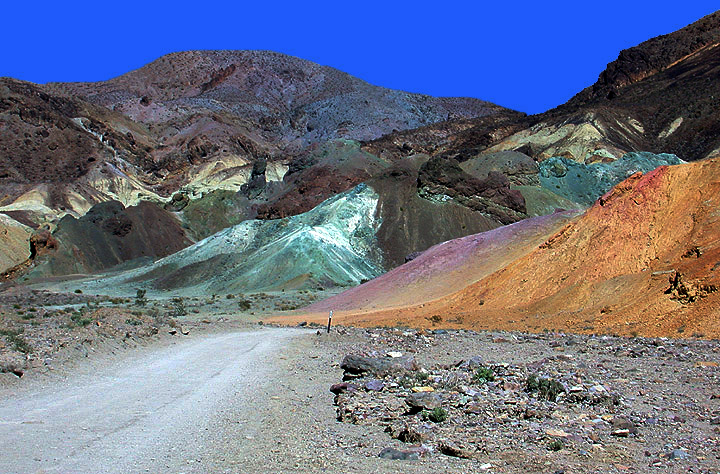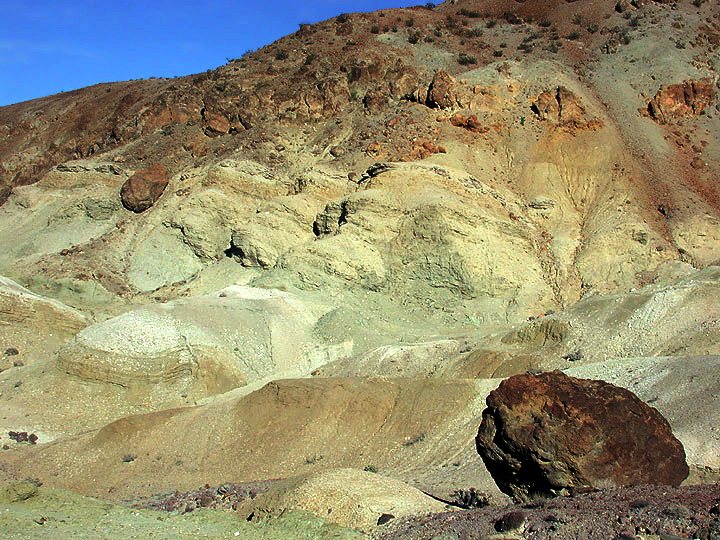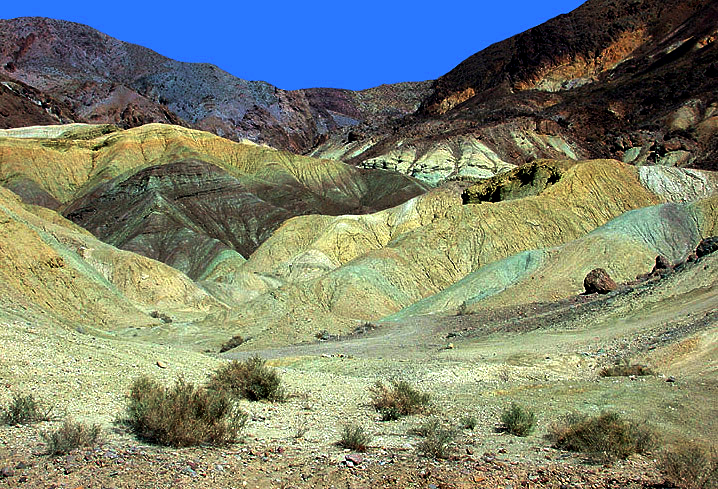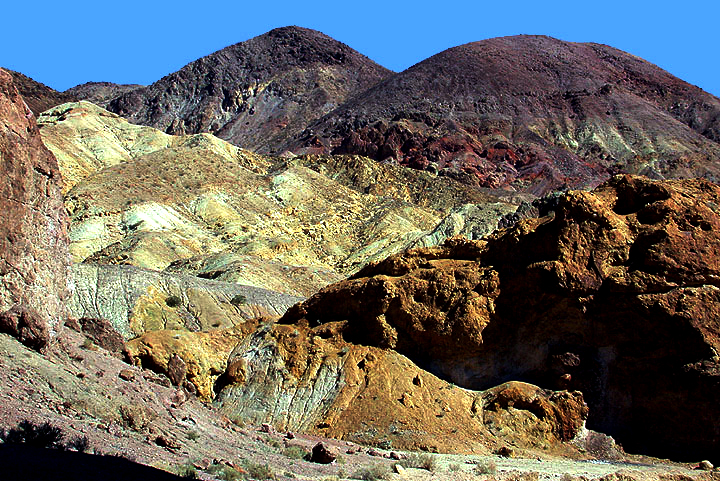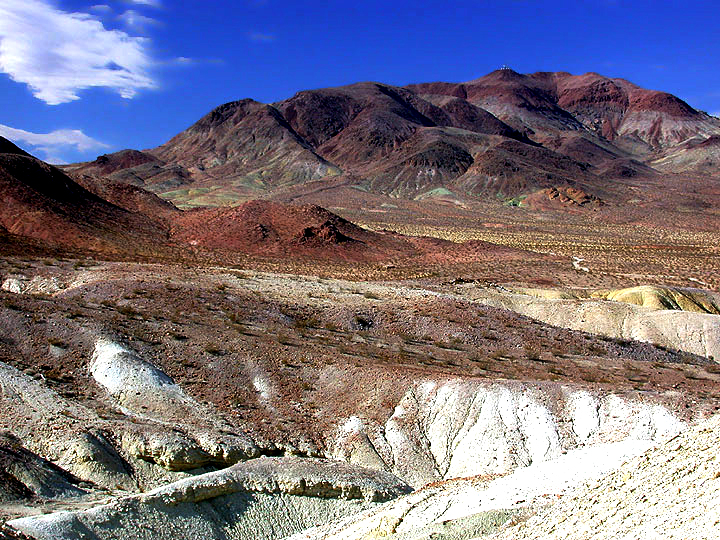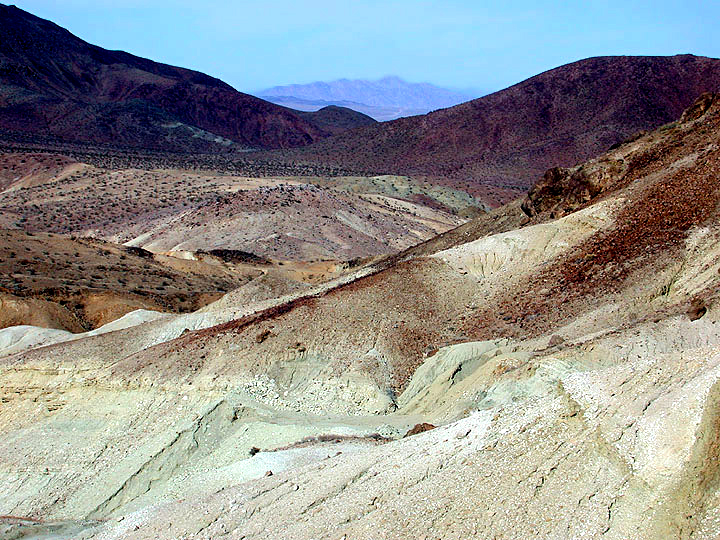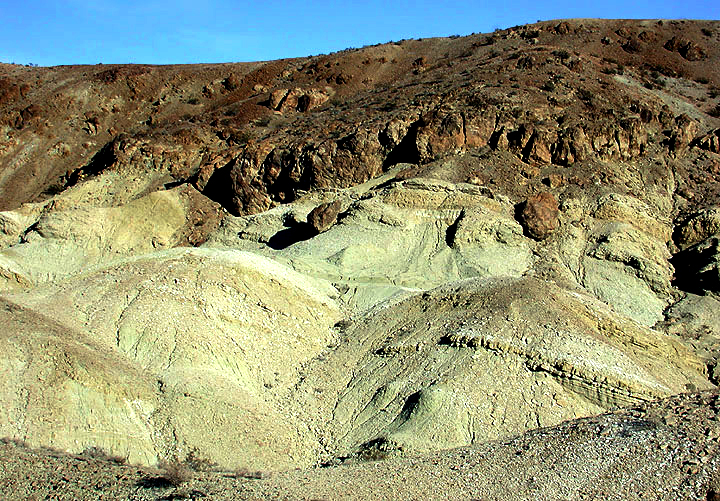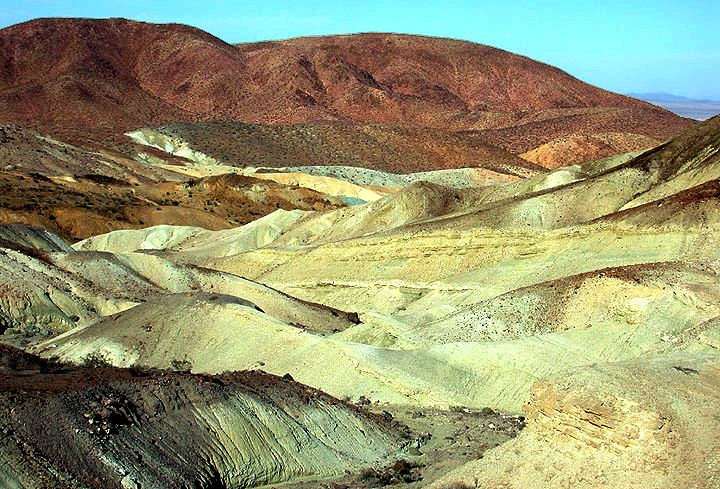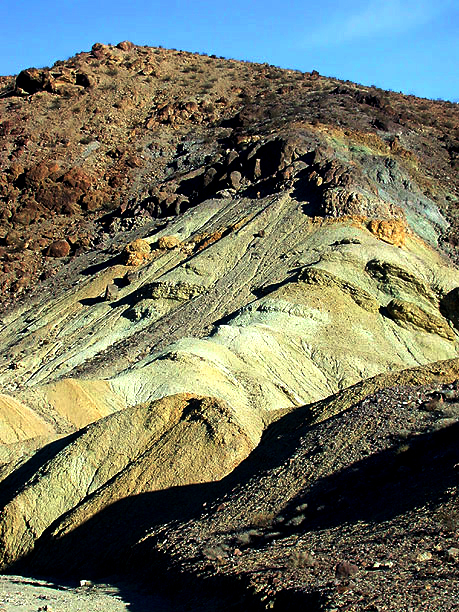|
Here occurs another bonanza locality--where abundant fossiliferous
calcium carbonate concretions occur in the microlaminated shales
that lie several feet below the reddish brown volcanic dacite
cover at the skyline.
A special note here: Practically every major concretion-producing
horizon in Fossil Insect Canyon has been heavily prospected through
the decades by amateur fossil enthusiasts and professional paleontologists
alike. Literally hundreds of thousands of such calcium carbonate
stones have been removed from the canyon since their precious
fossil "cargo" was discovered during the mid 1950s.
It is hoped that visitors to the district will take home only
a modest number of concretions, leaving intact the integrity
of the stratigraphic sequence for others to study and enjoy.
Otherwise, officials will doubtless close the canyon to all but
professional paleontologists bearing a degree from an accredited
university.
|
